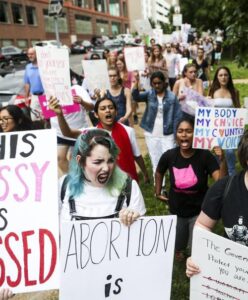By: Annie Buck
In the summer of 2019, the governor of my home state, Missouri, infamously signed House Bill 126 (HB126), an eight-week abortion ban, into law. In addition to making it more difficult for minors to get abortions and enacting a trigger law, this bill established a selective abortion ban that prohibited any person from performing an abortion for the reasons related to the presumed sex, race, or (dis)abilities of the fetus. Specifically, this bill banned any person from receiving an abortion based on a screening indicating Down syndrome or the potential for Down syndrome in a fetus. Immediately after learning about this selective abortion ban written into HB 126, I began to question what it means for the reproductive rights and disability rights movements to work together to strive for equity and justice. This bill seemed to pit these two movements against each other based on inherently opposing goals and values. It has been though using a reproductive justice and disability justice framework that I have learned what accessible and just futures look like. 
It is a future that restructures society so that the architecture and pace of life are accessible to all people. It is a future that invites people with disabilities to work with genetic counselors and OB/GYNs to provide accurate information about having a child with disabilities to pregnant people. It is a future that creates sexual health education curriculums that emphasize the sexuality of people of disabilities and name the history and current practice of forced sterilization of people with disabilities, Black, Indigenous and people of color, and incarcerated people. It is a future that amplifies legislation that deems people with disabilities as “fit” parents and supports families with disabilities.
The disability justice and reproductive justice movements are founded on the human rights principles of bodily autonomy and self-determination. In this way, these movements are grounded in the same ideas of what equity, accessibility, and justice look like. While I know that the reproductive justice movement has a lot of work to do in order to make this coalition possible and sustainable, I believe that this future can and will exist.
